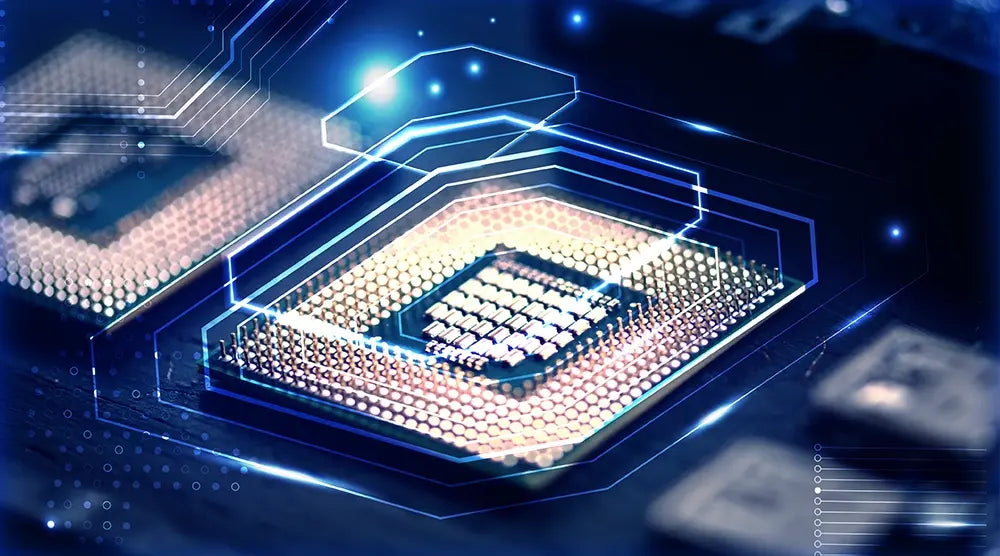Smooth gaming, multitasking, and general computer tasks rely on a fast CPU. How responsive your computer feels depends on your CPU's performance, whether you are using large programs, working on several tabs, or streaming.
Well, there's an effective solution; you don't have to replace your CPU every time to get better performance. Correct adjustments and care will enable you to maximize your system settings, maintain your processor cool, and make your computer feel new.
This blog will provide proven, expert-backed techniques on how to increase CPU performance without being heavy on your pocket.
Optimize Your System Settings
Often, your operating system consumes CPU cycles on operations you neither want nor need. A few minor changes can create a world of difference.
- Disable superfluous startup applications: Many programs start at startup and slow down your boot time. Disable them using Task Manager (Ctrl + Shift + Esc).
- Update Windows and drivers: Frequently, CPU inefficiency is caused by faulty drivers or operating system faults. Keep all information current.
- Settings for power: In Windows, move to "High Performance" mode. This guarantees the CPU runs at full capacity rather than throttling down to preserve energy.
In essence, a few setting changes can free up resources and significantly improve your system settings for improved speed.
Maintain Your CPU Cooling
Overheating can cause the throttle, by means of which the processor lowers its speed to avoid damage. This explains why one cannot overestimate the value of CPU temperature management.
- Clean Your PC: Dust accumulation prevents airflow. Simple washing helps to lower temperatures dramatically.
- Apply thermal paste once again: Dried or old paste hinders heat transmission. Replacing it may lower CPU temperatures by 5–10 degrees Celsius.
- Upgrade your cooler: Are you still using a stock cooler? Upgrade to a more effective air cooler or liquid cooling system.
Keep in mind that CPU cooling saves your hardware's life in addition to improving performance. The importance of CPU cooling should be a priority!
Try Safe Overclocking
Overclocking is driving your CPU beyond its standard operating speed. Particularly for gaming, unlocking additional performance is a tried-and-true approach.
Advantages:
- Quicker load times, higher frame rates, and more seamless multitasking.
- Higher heat output and possible instability if not done correctly are among the dangers.
- Use reputable tools like Intel XTU, AMD Ryzen Master, or BIOS changes. Beginning modestly, see stability testing.
Though overclocking can be complex, contemporary CPUs and motherboards include protections that make it rather safe when done in moderation.
Handle Background Processes
Even the strongest CPUs have difficulties if too many programs are hogging resources.
- Task Manager: Find and shut down applications consuming too much CPU.
- Gaming Mode (Windows 11): Gives games preference processing, hence minimizing disruptions.
- Background applications: Shut off unnecessary silent background services.
This guarantees your CPU capacity goes where it is really needed.
Upgrade Smartly
Reducing the burden on your CPU is occasionally the best approach to support it.
- Adding more RAM helps to lower reliance on virtual memory, hence avoiding CPU bottlenecks.
- Faster SSDs could cause the CPU to be delayed in storage. NVMe SSDs solve this problem.
- If your CPU is 5–6 years old or older, try to switch to a next-generation model. The performance increase could be very great.
Effective updates enable you to maximize your money rather than just swapping components.
Regularly Maintain Your PC
- Continuous treatment prevents slowdowns.
- Dust removal increases cooling efficiency and improves airflow.
- Updating firmware and BIOS may solve CPU problems and enhance compatibility.
- Software like HWMonitor or Core Temp assists with CPU health monitoring.
- Regular, easy maintenance guarantees your CPU keeps operating like new.
Wrap Up
Learning how to increase CPU performance doesn’t always mean buying a new processor. By optimizing system settings, maintaining effective cooling, safely overclocking, managing background processes, and performing regular maintenance, you can unlock your PC’s full potential. Implement these expert-backed techniques to enjoy smoother gaming, faster multitasking, and improved overall responsiveness.
For more expert guides on boosting your PC’s performance, visit the Technoid Inc. Blog and discover how to make your computer run like new!
Frequently Asked Questions
Q1. Can overclocking destroy my CPU?
Certainly not when done with care. Modern CPUs already feature safety features, but they still must be monitored for temperature.
Q2. When to change the thermal paste?
The best time would be every 2-3 years, but if there are any signs of increasing temperatures, it should be reapplied sooner.
Q3. What is the easiest performance enhancement without upgrading?
Disable unnecessary startup apps, keep your drivers updated, and set your PC to high-performance power mode.
Q4. Do all RAM upgrades enhance CPU performance?
Not always. RAM upgrades mainly benefit systems that are memory-starved. By providing sufficient memory, the CPU spends less time relying on slower virtual memory, which can improve overall performance.

 United States
United States

